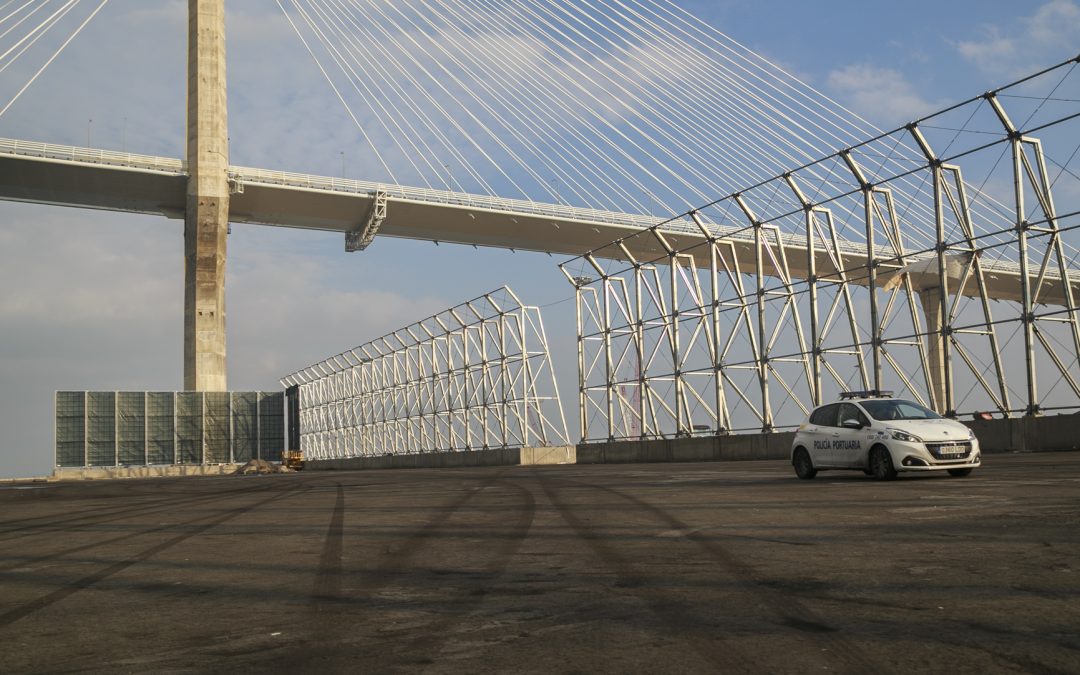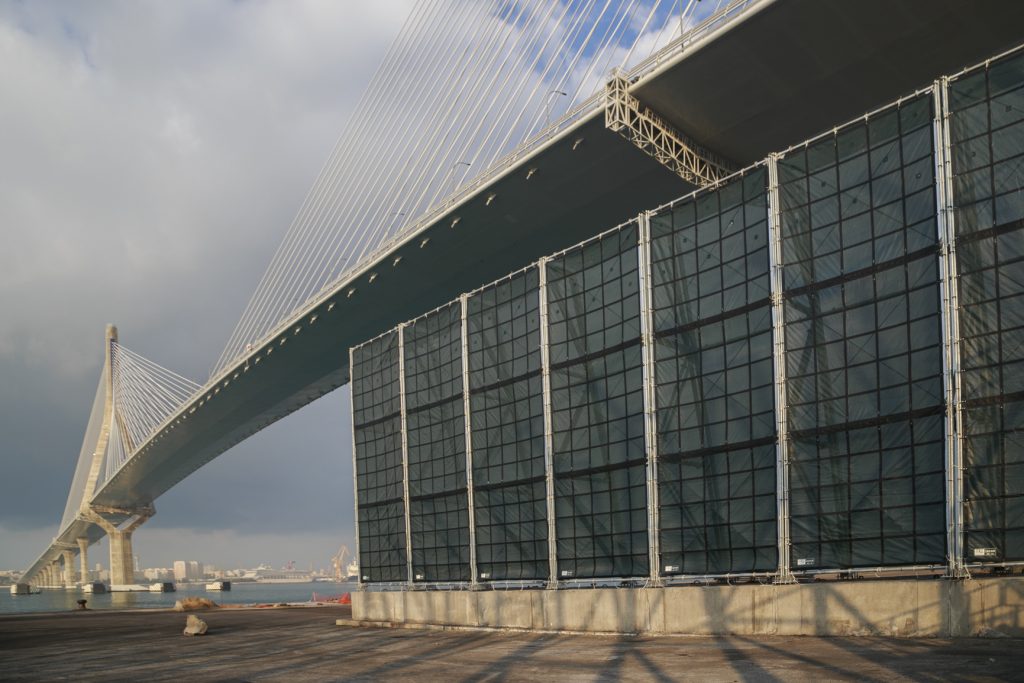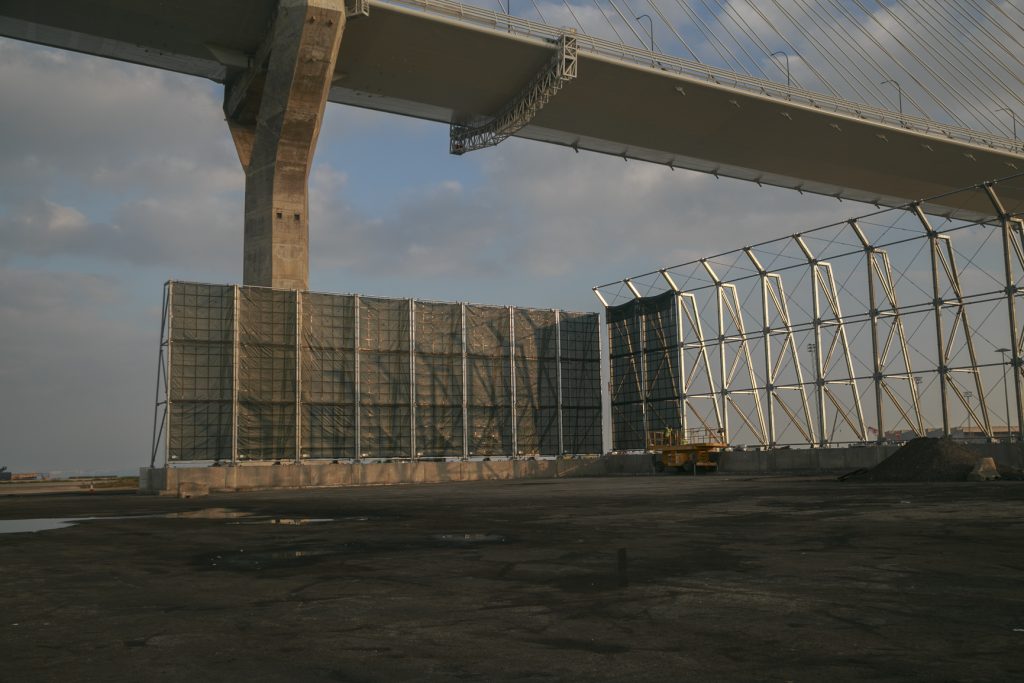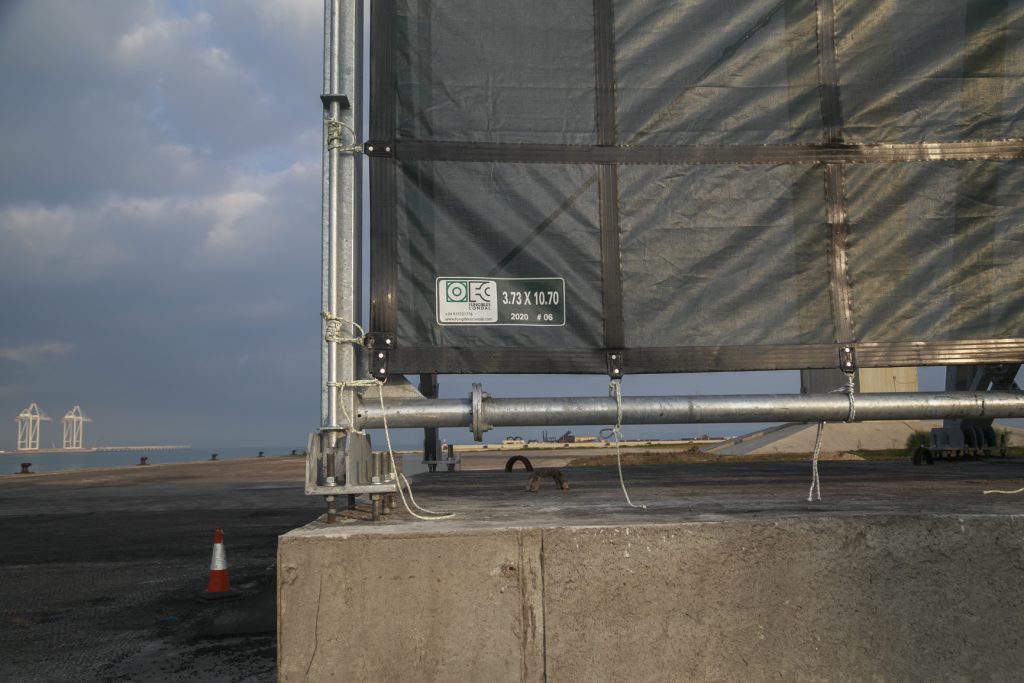Tuesday 19th January 2021. The construction of the new protection screens for bulk handling in the La Cabezuela-Puerto Real dock has reached its last milestone this week with the installation of the special protection mesh that will prevent the spread of dust in suspension during the loading and unloading of the goods.
As is known, the new barriers have a more efficient design that will improve the sustainability of operations. Specifically, the screens have been placed 72 metres from the edge with a bracketed alignment ([). The barrier is made up of 58 screen modules of 4 metres in length, of which 42 are located parallel to the quay and 16, perpendicular to it, in two alignments of 8 modules each. The upper part has a 42º slope to improve its efficiency. The protected area reaches 233 linear metres and the height of the screens is 14 metres.
The project, which is part of a series of measures to improve the sustainability of the quay, will be completed in February
Four mobile water spraying cannons will also be installed to complement the protection of certain bulk handling positions and perfect the protective action of the barriers in certain weather conditions. The cannons will be available in 6 different locations.
The construction of the screens, which is expected to be completed in February, is part of a larger project with various measures including paving the area to prevent the accumulation of material in cavities and to facilitate the cleaning of the docks, also underway.
With the aim of maximising the organisation of heavy vehicle traffic and more efficiently controlling the cleanliness of the areas where these vehicles circulate, the signposting of the roads connecting the port’s interior will also be improved, mainly between the loading and unloading area and the dock access.
The Port Authority has also recently set up an Environmental Management System that will enable it to control and improve emissions in Cabezuela, among other objectives. Thanks also to the installation of two state-of-the-art measuring stations in collaboration with the Andalusian Regional Government, the effectiveness of the environmental improvements implemented is already being monitored, as well as knowing in detail the emissions in both areas in real time and continuing to take measures to improve the sustainability of the port.
The Associated Unit CSIC-University of Huelva “ATMOSPHERIC POLLUTION” and the Research Centre for Sustainable Chemistry (CIQSO) of the University of Huelva is the independent body in charge of designing the stations and carrying out the monitoring (analysis, tests, reports, etc.) of atmospheric emissions in the two control stations located in the possible areas of influence of the port lands of La Cabezuela.
In this sense, the results of the measurements on the efficiency of the measures once they have been put in place, will lead the Port Authority to reinforce the investments if necessary in order to achieve the least impact of the activity on the environment.
In fact, in a second phase, the APBC plans to make an investment effort to improve the paving of the rest of the quay and to level out the railway access road, when the railway is operational in Cabezuela, which will also improve the environment of the dock.
The Port Authority also expects the implication of the rest of the economic and industrial agents of the surroundings in the sustainability of this space.




